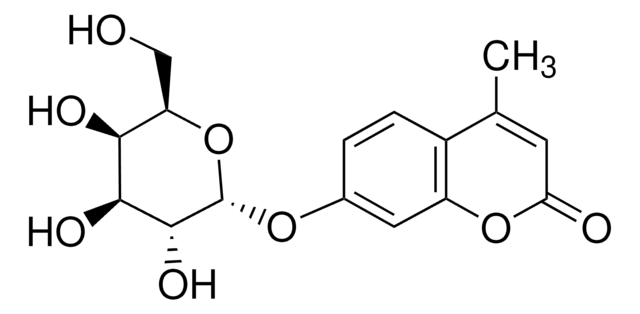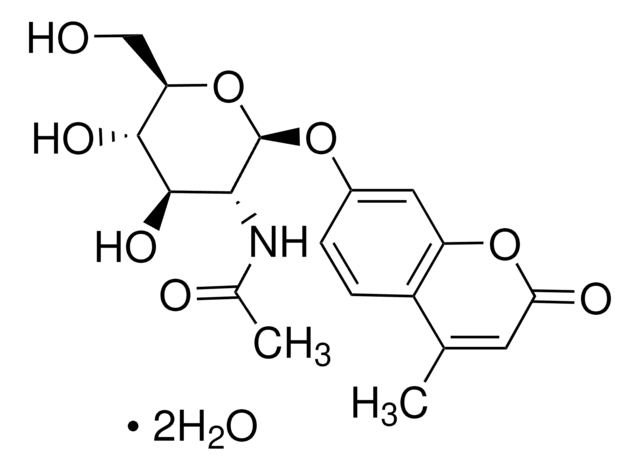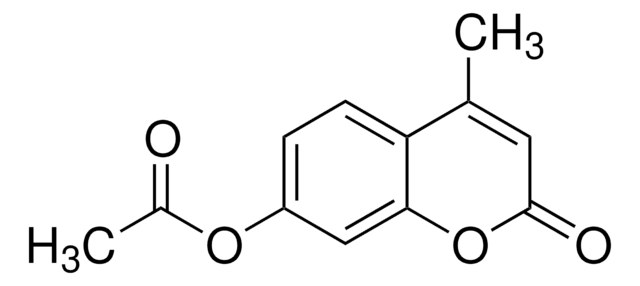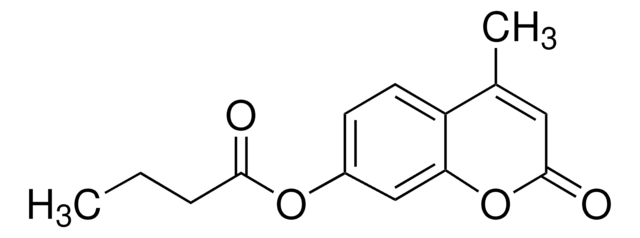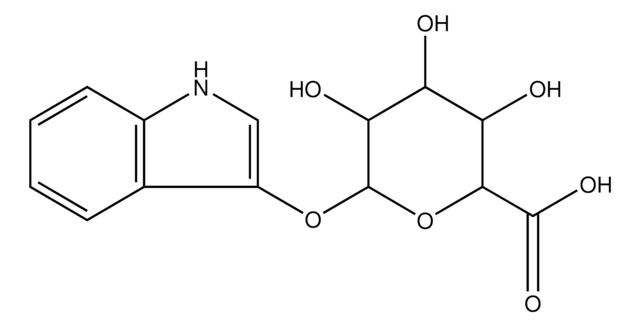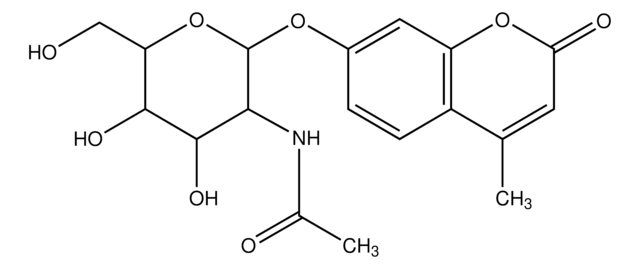Kluczowe dokumenty
M1633
4-Methylumbelliferyl β-D-galactopyranoside
fluorogenic, ≥99% (TLC), powder
Synonim(y):
MUG, MUGA
About This Item
Polecane produkty
Nazwa produktu
4-Methylumbelliferyl β-D-galactopyranoside, ≥99% (TLC)
Próba
≥99% (TLC)
Formularz
powder
rozpuszczalność
pyridine: 10 mg/mL, clear, colorless to faintly yellow
temp. przechowywania
−20°C
ciąg SMILES
CC1=CC(=O)Oc2cc(O[C@@H]3O[C@H](CO)[C@H](O)[C@H](O)[C@H]3O)ccc12
InChI
1S/C16H18O8/c1-7-4-12(18)23-10-5-8(2-3-9(7)10)22-16-15(21)14(20)13(19)11(6-17)24-16/h2-5,11,13-17,19-21H,6H2,1H3/t11-,13+,14+,15-,16-/m1/s1
Klucz InChI
YUDPTGPSBJVHCN-DZQJYWQESA-N
Szukasz podobnych produktów? Odwiedź Przewodnik dotyczący porównywania produktów
Opis ogólny
Zastosowanie
Kod klasy składowania
11 - Combustible Solids
Klasa zagrożenia wodnego (WGK)
WGK 3
Temperatura zapłonu (°F)
Not applicable
Temperatura zapłonu (°C)
Not applicable
Środki ochrony indywidualnej
Eyeshields, Gloves, type N95 (US)
Wybierz jedną z najnowszych wersji:
Masz już ten produkt?
Dokumenty związane z niedawno zakupionymi produktami zostały zamieszczone w Bibliotece dokumentów.
Klienci oglądali również te produkty
Nasz zespół naukowców ma doświadczenie we wszystkich obszarach badań, w tym w naukach przyrodniczych, materiałoznawstwie, syntezie chemicznej, chromatografii, analityce i wielu innych dziedzinach.
Skontaktuj się z zespołem ds. pomocy technicznej



